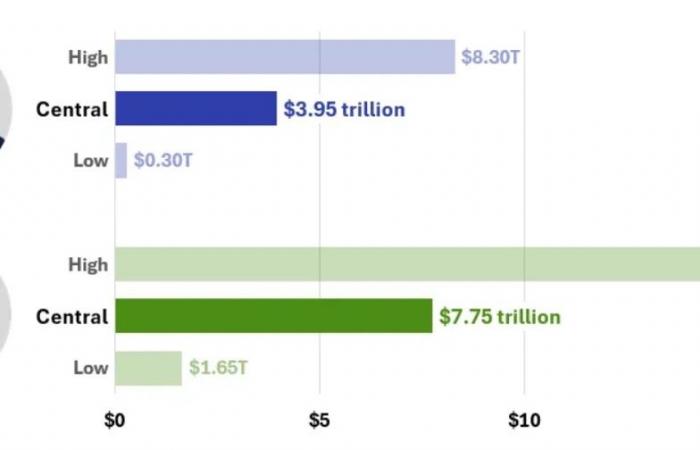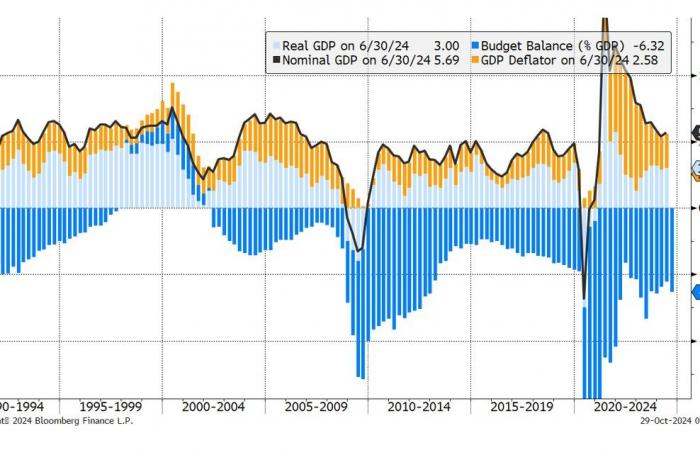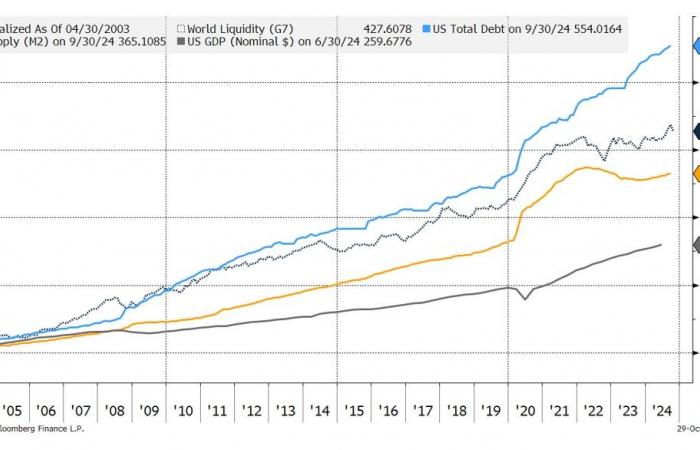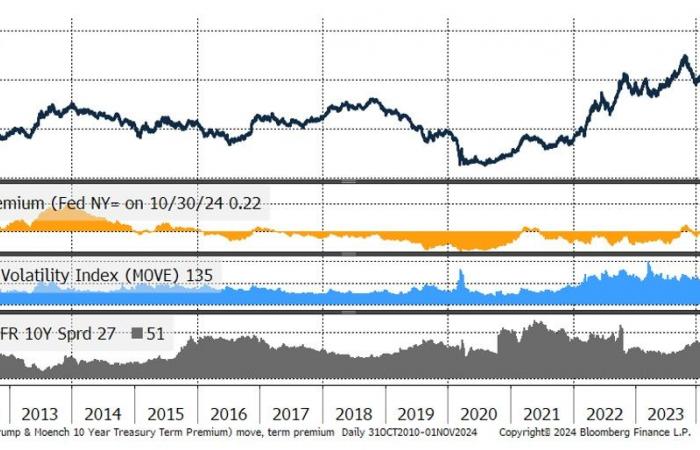The evolution will depend on the tolerance of bond markets and the level of yield at which pressure will force governments to reform their spending.
GAMA’s monthly bond update analyzes current bond market dynamics and offers recommendations for optimal positioning of an overall bond portfolio. This month, our attention is focused on the watchdog role of bond markets, often nicknamed “bond vigilantes,” as safeguards for fiscal policies.
For several weeks, financial markets and observers have been focused on the upcoming results of the American elections but beyond the identity of the next President of the United States, the crucial issue lies in the composition of Congress – monotonous or divided. If the majority of polls give Trump an advantage over Harris, the previous elections of 2016 and 2020 demonstrated the limits of electoral projections and the importance of maintaining a cautious posture. Whoever is elected, budget deficits should continue to grow according to their program, with distinct directions: tax cuts for Trump, or spending increases for Harris.
Graph 1: Impact of tax expenditures according to Harris or Trump programs
(Source: Committee For A Responsible Federal Budget)
Bond markets are closely monitoring these choices, because a Trump-Republican Congress tandem could significantly worsen the budgetary imbalance, already experienced under the Biden administration. Deficits have widened despite strong economic growth, and the debt burden as a percentage of GDP has reached an unprecedented level, now surpassing defense spending. This imbalance does not even take into account the federal off-balance sheet debt which also continues to grow (eg Medicare & Medicaid which should increase to 8% of GDP by 2034 according to the CBO).
Graph 2: Breakdown of US nominal growth (real growth and inflation) with deficit expressed as a % of GDP

(Source: Bloomberg, GAMA)
Beyond the United States, the global trend of accelerating debt continues. At the global level and in dollars, we can see that the rate of annual debt increase increased from around 5-6% per year until the 2008 financial crisis, to around 7-8% until the COVID crisis, with a rate which now stands at around 10% per year since 2020. Central banks have increased liquidity injections, distilled by the banking system and non-bank credit players with a total exceeding 200 trillions of dollars according to liquidity specialist Crossborder. One in four dollars currently in circulation was issued less than 3 years ago, leading to a marked increase in the prices of financial and real assets.
Graph 3: Normalized evolution in 2003 of American nominal growth, liquidity (M2 or global liquidity) and debt
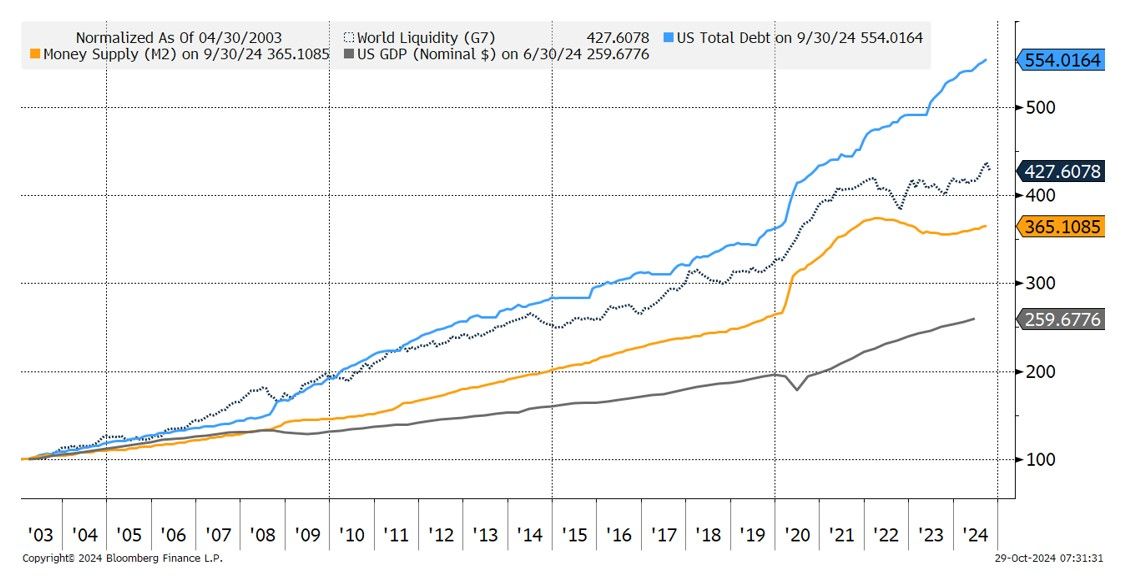
(Source: Bloomberg, GAMA)
This dynamic is based on a delicate balance: to maintain aggregate demand and a political balance with a certain social cement, the majority of governments maintain, or even reinforce, budgetary deficits, to avoid a marked fall in demand, synonymous with recession and possibly non-re-election or at least unpopularity. However, this strategy inevitably leads to an increase in the debt burden. In the United States, the solvency ratio, or the share of tax revenue devoted to debt service, has reached record levels since the 1990s, at more than 20%. If the debt were to be refinanced at current rates, this ratio could even exceed 30%, a level not seen since World War II.
Graph 4: Solvency ratio of the United States
(debt interest as a % of tax revenue using current effective or market rates)
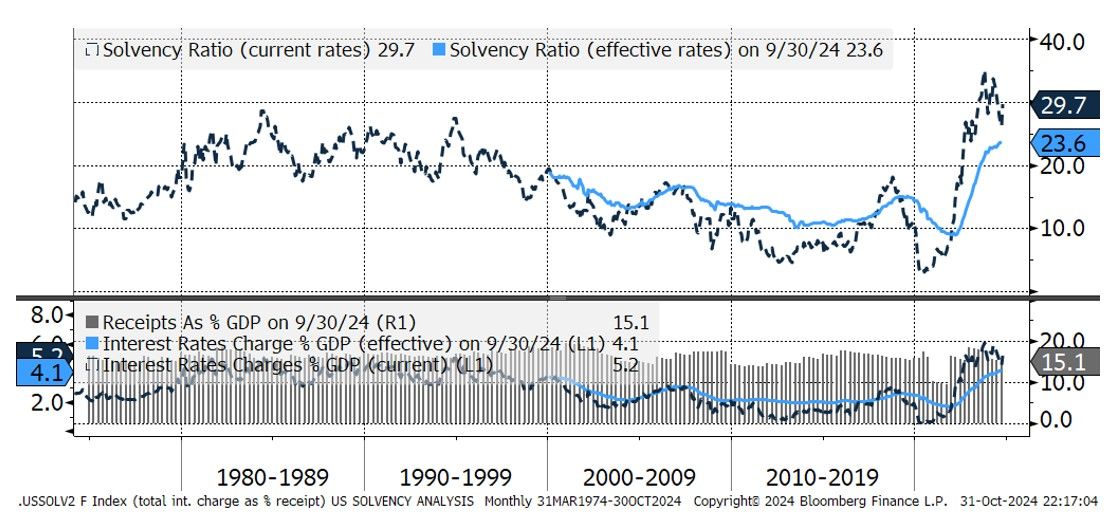
(Source: Bloomberg, GAMA)
The central question remains: to what extent will this increase in deficits be tolerated? Will central banks be able to continue to accommodate these budgetary imbalances? What are the implications for bond markets and asset allocation more generally?
The evolution will depend on the tolerance of bond markets and the level of yield at which pressure will force governments to reform their spending. This is the phenomenon of “bond vigilantes” theorized by Edward Yardeni in the 1980s. Yardeni coined this term to describe the phenomenon whereby investors in the bond market act as a form of “police” of the fiscal and monetary policies of governments. If they perceived these policies as inflationary or fiscally irresponsible, they sold government bonds, causing yields and borrowing costs to rise. This reaction forced governments to adopt more rigorous fiscal policies, particularly in the management of debt and inflation. Yardeni used the term during a time of high inflation and fiscal challenges in the United States, notably during the era of Fed Chairman Paul Volcker in the early 1980s. Upon taking office, President Bill Clinton had to also face pressure from bond markets to reduce the fiscal deficit. The solvency ratio had reached similar levels in 1994 to those we have today. In response, Clinton implemented deficit reduction policies that went so far as to restore full balance by the late 1990s, thereby stabilizing bond yields. Today, this pressure is being felt again in countries like France and the United Kingdom. France, with a public deficit above 6% in 2024 and a debt close to 120% of GDP, is under pressure from the markets which are demanding austerity measures. In the United Kingdom, Keir Starmer’s government had to propose the largest tax increase in 30 years to appease the bond markets, although they still consider the effort insufficient with a marked increase in Gilt yields in recent years. days.
Conceptually, we can therefore establish two scenarios: that of the continuation of accommodating fiscal policies, which would prevent monetary policy from becoming more accommodating, maintaining real rates at high levels and with a risk of increasing inflation premia. A scenario compatible with an interesting level of growth and generally favorable to risky assets. The second scenario where governments reduce deficits via an increase in taxes and/or a reduction in spending. The direct impact of restrictive fiscal policies would then directly slow down the growth and profitability of companies, with an increase in the risk of recession but would conversely allow for more accommodating monetary policies. The second scenario would obviously be much more favorable to quality bonds and duration. If the majority of observers seem to be counting on the first scenario, the signs of tension are multiplying: whether it is the increase in the volatility of rates, the widening of yield spreads between interbank rates and treasury bills or the increase term premiums (additional return required by the market to hold duration risk). Paradoxically, these signs are rather favorable to taking interest rate risk since they indicate a concern of the bond market which will in a certain way exert pressure on governments.
Graph 5: American 10-year rate and tension indicators
(Term premium, implied rate volatility, yield gap between 10 years and swap rate)
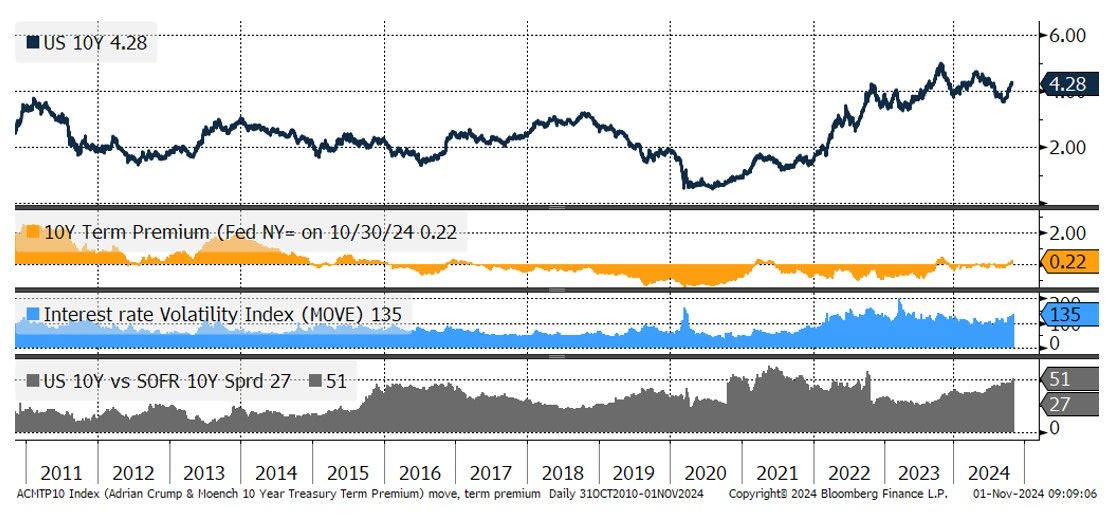
(Source: Bloomberg, NY Fed, GAMA)
The idea that the future US administration, whether Trump or Harris, could easily implement an expansive fiscal policy appears increasingly to be called into question by the likely reaction of the bond markets – the “bond vigilantes” are indeed back. Just like Clinton in the 1990s, the future president will have to deal with the vigilance of the bond markets, which could initiate a regime change favorable to assets at fixed rates and less favorable to assets dependent on injections from central banks or public spending.


